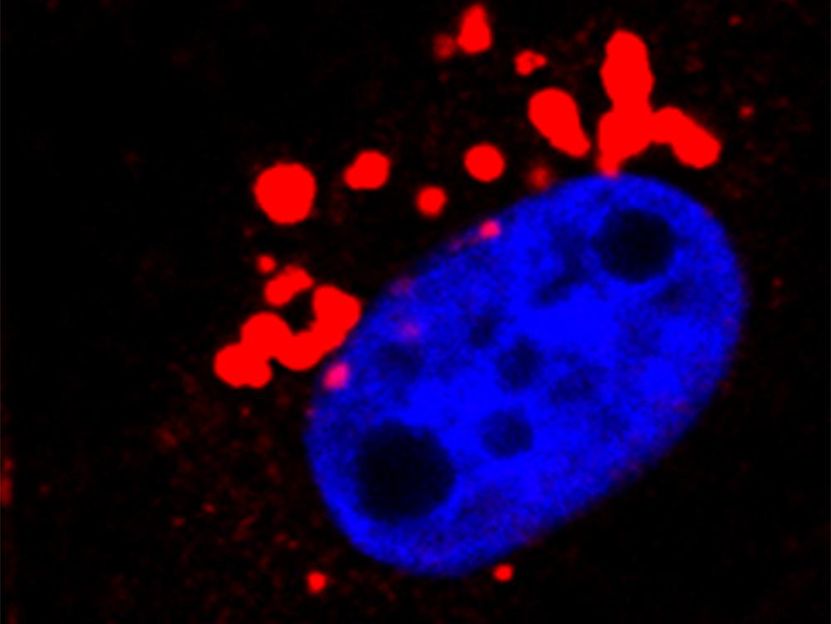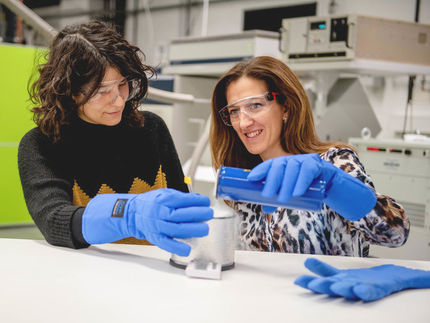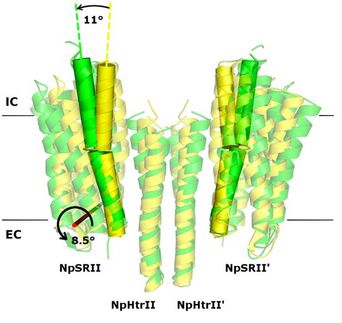Strategy designed to identify therapeutic targets in triple-negative breast cancer
Localizes proteins in the membrane of tumor cells and then targets them in a specific way.
Research led by the Cancer Research Center (CIC), a joint center of the Spanish National Research Council (CSIC) and the University of Salamanca (USAL), has described a strategy for identifying proteins in the membrane of tumor cells and then attacking these cells using specific antibodies against these proteins. This work lays the groundwork for defining new potential targets for drug-conjugated antibodies (drugs that combine the antitumor effect of the antibody and that of a drug attached to them) in other solid or hematological tumors.

Tumor cell after treatment.
CIC
The article, published in the Journal of Experimental & Clinical Cancer Research, has counted with the participation of the Hospital Clínico Universitario de Salamanca, the Instituto de Investigación Biomédica de Salamanca (IBSAL), the Centro de Investigación Biomédica en Red Cáncer (CIBERONC), and the Hospital Clínico San Carlos de Madrid.
The most commonly diagnosed cancer in women is breast cancer, according to data published by the Spanish Society of Medical Oncology. Although each patient's tumor is molecularly different, in clinical practice breast tumors are grouped into three subgroups. Among them, the subtype known as triple negative is the most aggressive and represents 15-20% of all cases of breast cancer. Despite having different therapeutic options, these are still not sufficient to cure patients. Therefore, this type of breast cancer requires the incorporation into the clinic of novel treatments that are effective.
In this sense, a strategy that is giving good results is based on discovering new therapeutic targets in cancer by analyzing what is called the surfaceome, which are cell surface proteins. Due to their location on the cell surface, these proteins are accessible and the expression of some of them is altered in various types of cancer. In fact, some of these proteins are overexpressed, i.e. their quantity is much higher in the tumor cell than in a normal cell. This makes it possible to act preferentially on the tumor cell using, for example, specific antibodies against that protein. At present there are different therapeutic strategies that use cell surface proteins as targets. Among these are the so-called antibody-drug conjugates (ADCs). ADCs are antibodies to which a cell-toxic agent has been attached. In this way, these drugs add the antitumor effect of the antibody and the antitumor effect of the drug attached to it.
"Taking into account the current need to incorporate new drugs aimed at triple-negative breast cancer that are more effective and due to the clinical efficacy of ADCs, our group set out to identify new targets for ADCs that could be used to treat this subtype of breast cancer," highlights researcher Juan Carlos Montero, from the CIC (CSIC-USAL) and the IBSAL-Hospital Clínico Universitario de Salamanca.
First, a list of possible cell surface targets susceptible to attack by ADCs was drawn up. Using genomic and proteomic techniques, normal breast tissues and triple-negative breast tumor tissues were compared. This study led to the identification of a group of about 20 proteins that could be targets of ADCs. Subsequent studies focused interest on one of them, called CD98hc. A drug-conjugated antibody (ADC) was prepared in the laboratory against this protein.
"During in vitro experiments, it was observed that this ADC had potent and specific antitumor activity against triple-negative breast cancer cells," says Montero. The ADC against the CD98hc protein not only blocked cell cycle progression (prevented tumor cells from expanding), but also resulted in tumor cell death.
To further investigate the observed antitumor effect of ADC against CD98hc, this antitumor effect of CD98hc ADC was tested in mice with tumors created in them after injecting them with human triple-negative breast cancer cells. In this way, the ADC against the CD98hc protein was found to reduce tumor volume in the animal.
"These preclinical results open the door to the possibility of exploring the efficacy of ADCs directed against CD98hc in the clinic," explains CIC (CSIC-USAL) researcher Atanasio Pandiella. On the other hand, it is possible that the CD98hc protein is also overexpressed in other types of tumors. If this were the case, it would further extend the value of this work, since it would open up the possibility of using the CD98hc protein as a new ADC therapeutic target for the therapy of other types of cancer. Finally, the use of this strategy to identify cell surface proteins differentially expressed in tumors allows us to establish the basis for defining new potential ADC targets in other solid or hematological tumors.
Note: This article has been translated using a computer system without human intervention. LUMITOS offers these automatic translations to present a wider range of current news. Since this article has been translated with automatic translation, it is possible that it contains errors in vocabulary, syntax or grammar. The original article in Spanish can be found here.























































